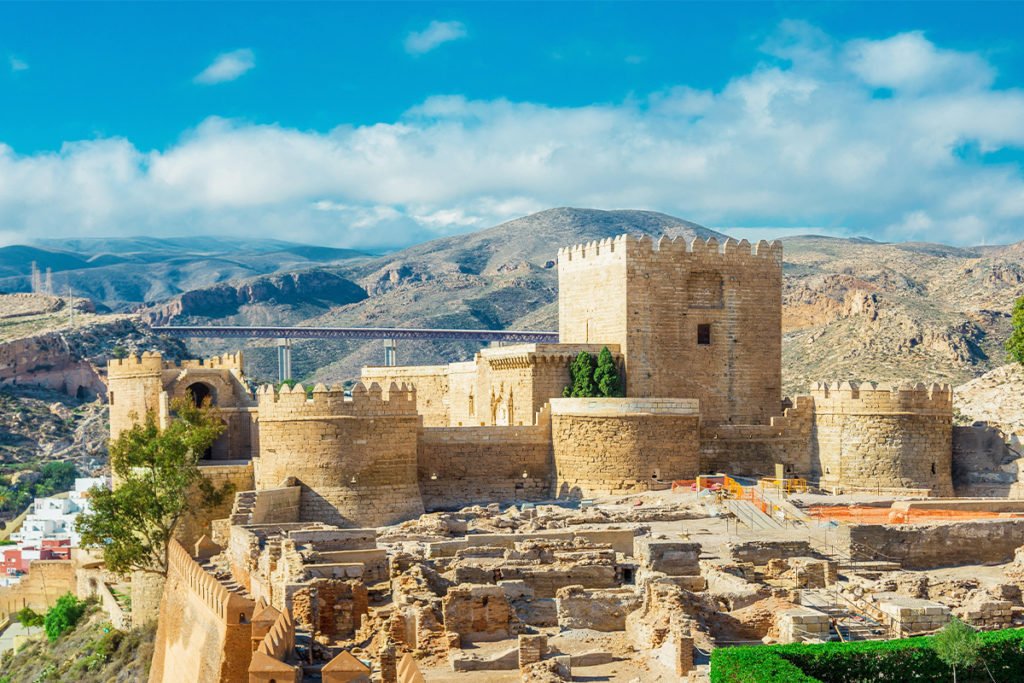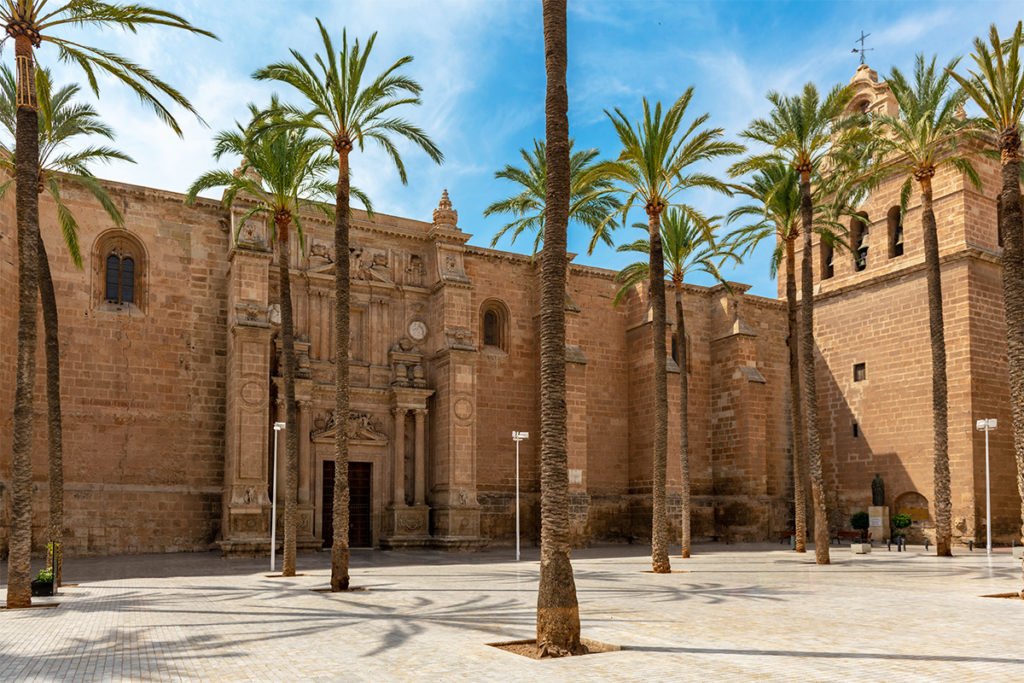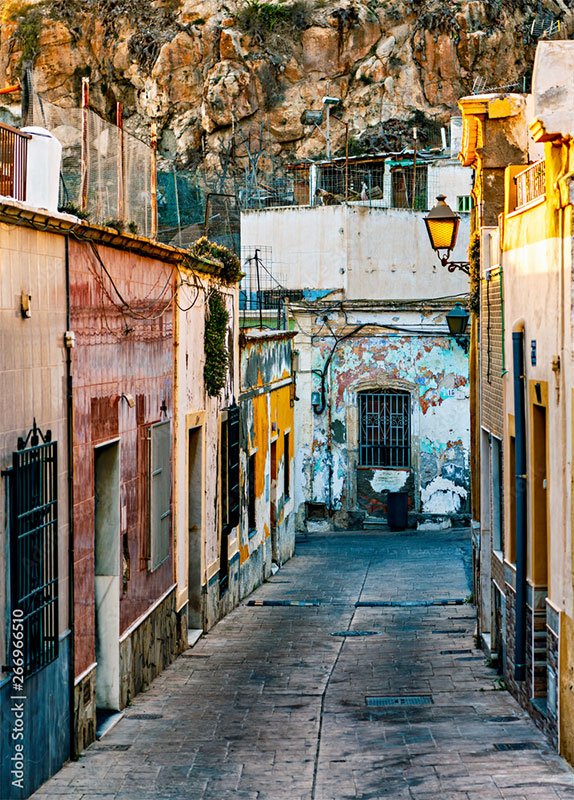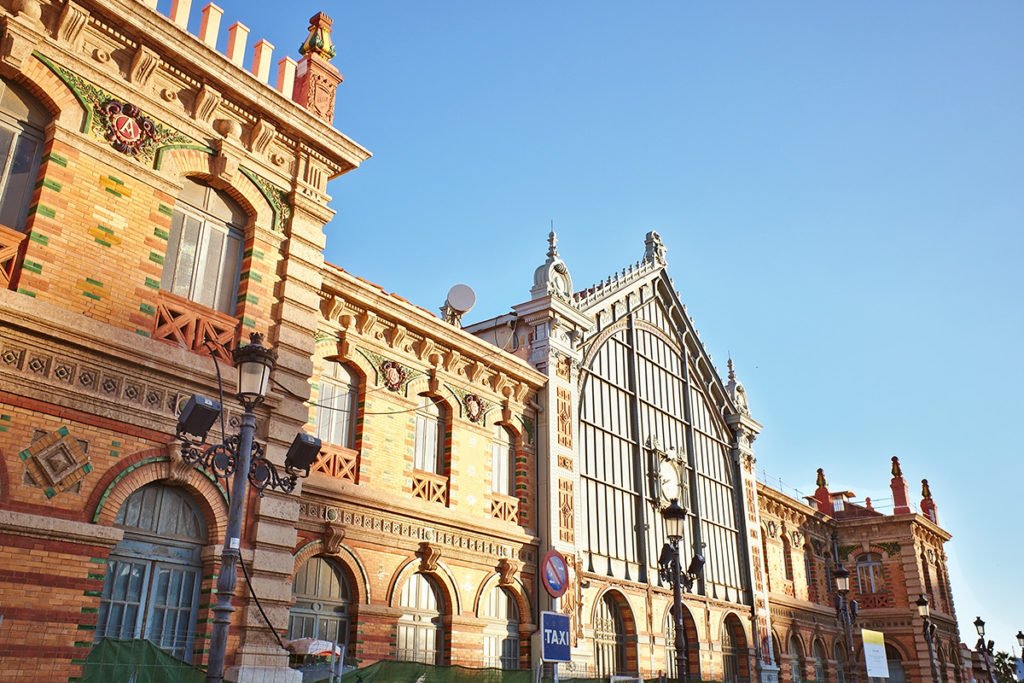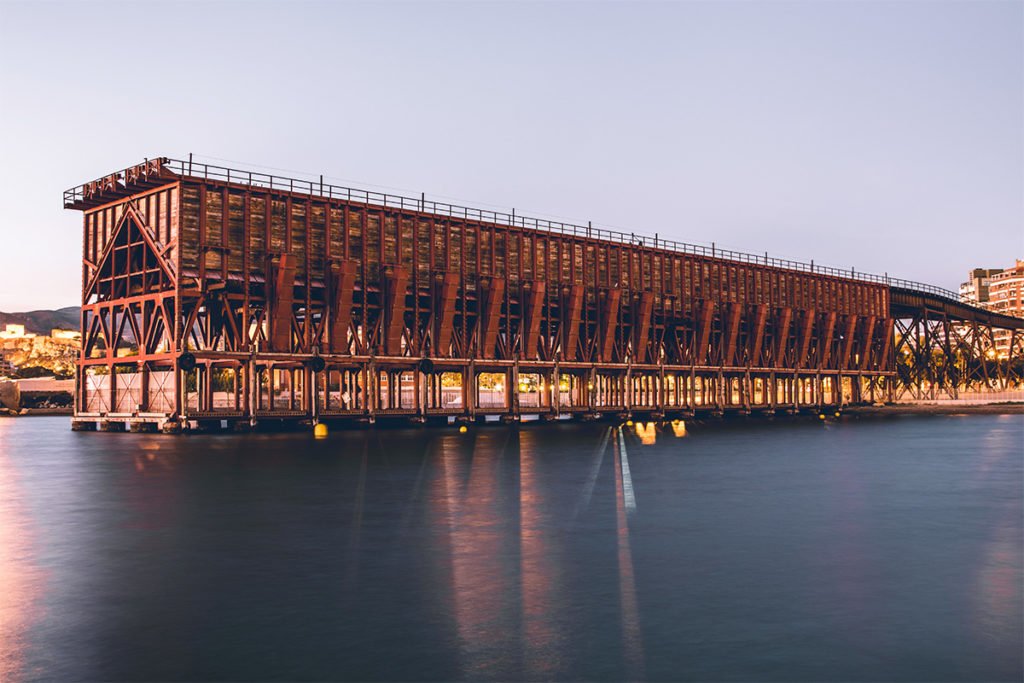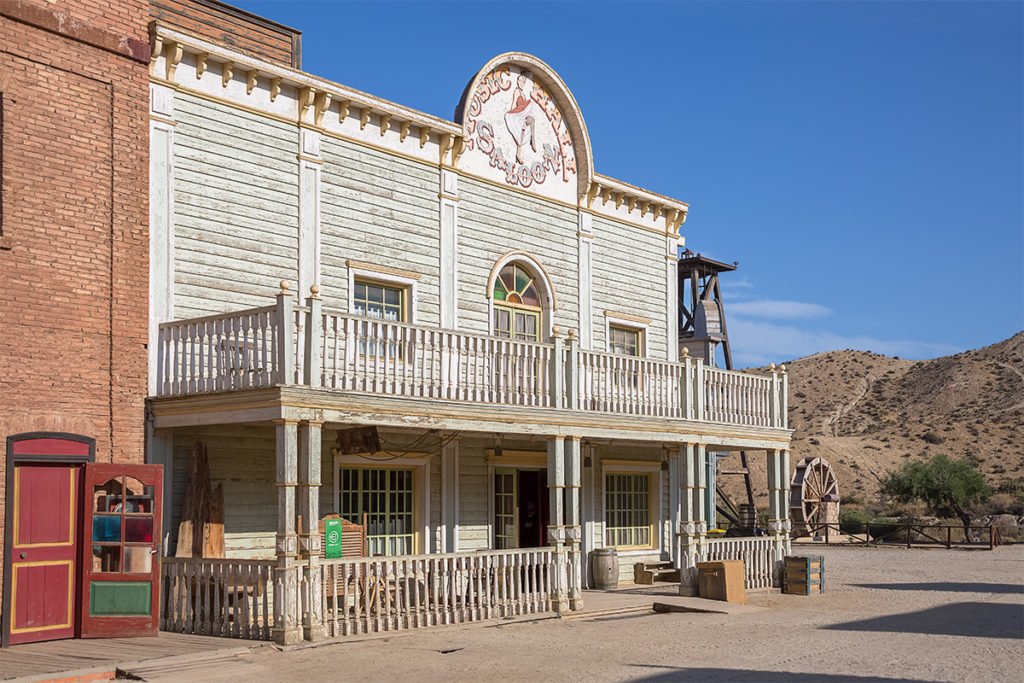Al-Mariyya in Arabic means an observation tower. This is where the name of the city comes from, where the tourist season lasts practically all year round!
Almería is located on the Mediterranean Sea, in the easternmost part of Andalusia. Known for its intensive cultivation of vegetables and fruits, Almería is often referred to as the greenhouse of Spain, but most people are interested in the city mainly because of its wonderful beaches, monuments and good weather. The average annual temperature there is maintained at 18 °C, and its location in a subtropical climate means that the sun shines there over 300 days a year. It’s time to check what places you should visit if your next vacation destination is Almería.
Alcazaba in Almería
All of Andalusia is famous for the clearly visible traces of the presence of the Moors in the peninsula. Alcazaba is the second largest fortress of this type not only in the region but also in the whole of Spain (the first place is occupied by the Alhambra in Granada). The fortified palace standing on the hill was erected on the ruins of former fortifications. Its construction in 955 was initiated by the then Muslim ruler Abderramán III.
The palace-defense complex was put into use in the 11th century, but after the conquest of this part of the Iberian Peninsula by the Catholic Kings, it was still waiting for many modifications. The over 1000-year-old Alcazaba in Almería served as a cemetery for a long time, and today it is the most frequently visited monument in this city, which step by step allows you to discover the history of Muslim rule in the areas of today’s Andalusia.
The Alcazaba fortress consists of three types of buildings, which form a closed complex visible from practically every point in the city. Behind the first fence, there is a vast, reconstructed garden and cisterns from the Muslim period. The second fence protected the palace residence of King Almotacín.
It consisted of a public part, in which today there are, among others, the caliph’s cisterns from the 10th century or the Christian arch from the 16th century. The upper part of this zone constituted the king’s private palace. Despite the fact that only its ruins have been preserved, it is worth looking there at least to learn about the legend of love between a captured Christian prisoner and the king’s favorite slave.
Cathedral in Almería
The second most characteristic monument in Almería after Alcazaba is the local cathedral of Nuestra Señora de la Encarnación de Almería. Located in the center of the Old Town, it definitely resembles a majestic fortress more than any temple. Its unusual appearance is the result of adding more fortifications, which allowed to repel attacks by pirates constantly invading this part of the coast. The decision to build the cathedral was made in 1522, after an earthquake razed the previous temple standing there to the ground.
It is difficult not to pay attention to the bell tower of the cathedral, which was originally intended to be defensive as well. On the eastern facade of the cathedral, you will find a characteristic bas-relief depicting a radiant sun with a human face surrounded by ribbons. This is the so-called Portocarrero Sun, which over time became a symbol of the city.
Other religious monuments of Almería
Almería also has several other religious monuments to offer. A short walk from the cathedral you will find Calle de las Tiendas, where the Iglesia de Santiago church is located. Its most characteristic part is the Plateresque-style portal and a slender tower measuring as much as 50 meters in height.
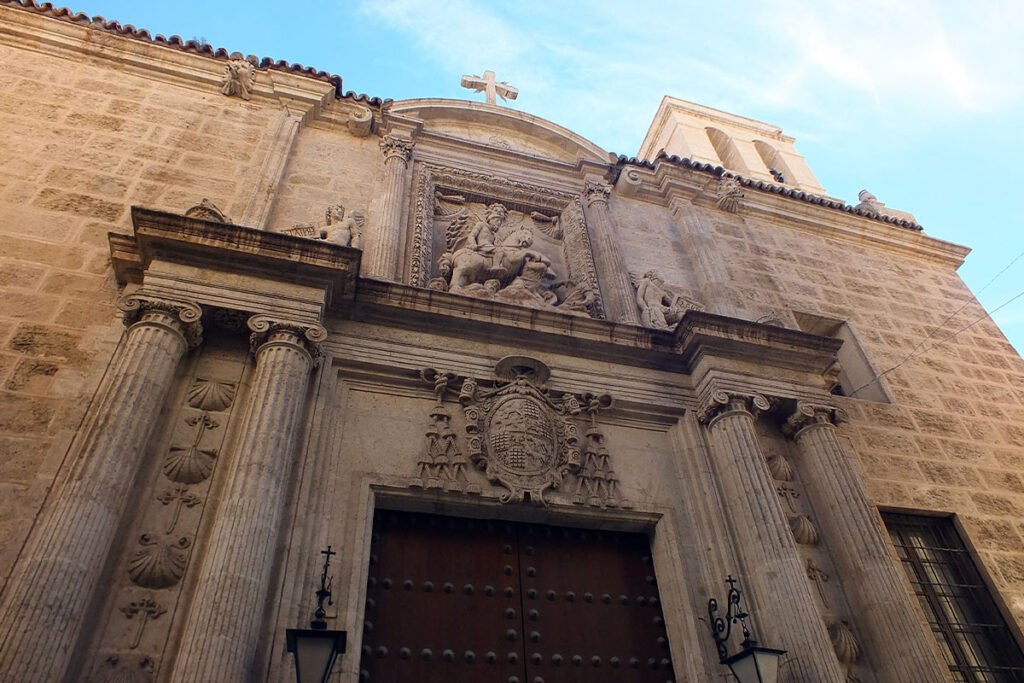
In the place of the former mosque, today stands another church eagerly visited by tourists. We are talking about the neoclassical Iglesia de San Pedro built in Almería in the 19th century. An important temple for the whole city is also the Iglesia de San Juan – a church from the 16th century, which, like the previous one, was erected on the remains of a former mosque. Visiting this place, we can still admire some architectural elements referring to Arab art.
Casa del Cine
In the 60s and 70s, Almería was strongly associated with the world of cinema. This was mainly due to nearby places such as the Tabernas Desert or Cabo de Gata, which provided an ideal film scenery. In those days, the place where actors most often stayed was a house in the Villablanca district, known as Cortijo Romero or Casa de Santa Isabel. Such personalities as Clint Eastwood or Brigitte Bardot spent long weeks there.
The house originally belonged to the Balmes family, but after it was bought by the Almería City Hall, it was transformed into a museum. Casa del Cine is intended to show the cinematographic heritage of Almería and emphasize the importance that the city once played in this industry. In Casa del Cine, you will learn how a film session works, how the director works and how a 3D film is made. You will also get to know all the outstanding figures who passed through this unique house.
John Lennon in Almería
A special guest of Cortijo Romero was John Lennon, the founder of the Beatles loved around the world. It was he who brought the greatest fame to this house. In 1966, Lennon stayed in Cortijo Romero while filming “How I Won the War”. The stay at the house even inspired him to write the famous song Strawberry Fields Forever. One of the rooms of today’s Casa del Cine reflects the bedroom occupied by John Lennon. His bed and the bathroom, where the legendary Beatle allegedly created one of the most popular compositions of the British band, are still there.
FUN FACT: Among the streets of the old town of Almería, exactly at Plaza Flores, you can also find a statue of John Lennon, sitting on one of the benches with his guitar.
Guitar Museum
Music lovers will also be interested in the Museum of Spanish Guitar “Antonio de Torres”. The Guitar Museum can hardly be called an ordinary exhibition space. It is an information center that allows visitors to get to know the world of one of the most popular musical instruments in the world in a simple and pleasant way.
Particular parts of the exhibition are also devoted to the motif of the guitar in art, the history of the instrument, its production, the most outstanding guitarists in history and the sounds of the strings. You can also use a soundproof room and try playing different guitars yourself.
Museum of Almería
In the very center of the city you will find a museum, which those interested in the history of this part of Spain should definitely visit. The Archaeological Museum was established in 1933, and its collection dates back to the Neolithic period. The exhibition spread over three floors of the building protects archaeological exhibits, photos, models depicting old settlements, ceramics and many others. Both the entire exhibition and the museum building itself are maintained in a very modern and minimalist climate.
La Chanca – the fishing district of the city
Artistic souls should not miss this picturesque area. La Chanca, known as the district of gypsies and fishermen, stands out in the photos with simple, one-story houses, whose walls shine with white and pastel colors. In the mysterious streets between the port and the Alcazaba, it is easy to meet artists and lovers of good music. La Chanca attracts tourists with the most authentic flamenco shows in the city and the most beautiful views of the nearby port and coast.
Other interesting places in Almería
While walking around Almería, it is also worth seeing several other buildings that cannot be denied artistic and historical values:
- Former railway station from 1893 (La Antigua Estación de Ferrocarril de Almería) – this building is a classic example of industrial architecture from the end of the 19th century. The main building material of the station was iron and glass, and against the background of other industrial buildings, the structure captivates with its functionality and beautiful design.
- Former Hospital of St. Mary Magdalene (Antiguo Hospital de Santa María Magdalena) – a complex consisting of three twin buildings: a hospital in the central part, a chapel located on the north-west side and a hospice situated around the patio.
- Cargadero de Mineral (other name: Cable Inglés) – another example of industrial architecture, this time from the beginning of the 20th century. Its main building material was iron, and its creation was related to the development of the production of this raw material and its export to various parts of the province.
Oasys Mini Hollywood Theme Park
Just over 50 km from Almería, inland, lies the Tabernas Desert, the largest desert and driest place in Europe. This area was once a popular film setting. Over 250 productions were shot there, including such classics as “The Magnificent Seven” and “For a Few Dollars More”.
Today, it is in vain to look for a film crew there, but numerous buildings straight from the Wild West have been preserved in excellent condition. They are now the main sensation of the Oasys Mini Hollywood theme park. Other attractions worth seeing are also waiting for you there, such as wigwams, a cinema museum and a stagecoach exhibition.
Costa de Almería Coast
When visiting this region of Spain, you must plan a few moments of blissful rest. In the case of Almería, beaches are not hard to find, because a wide, sandy belt stretches along the entire length of the city, from the port to the end of the promenade.
However, those looking for paradise corners are usually not satisfied with the city beach, because they know that views of the coast like from the cover of travel magazines await them in the area. Costa Almería, although it does not boast of fame comparable to Costa del Sol or Costa Brava, effectively attracts tourists with one peninsula. Cabo de Gata is a nature reserve located on a picturesque headland east of Almería.
In addition to beautiful vegetation and rock formations, you will find beaches there that definitely deserve to be called paradise. The most popular beaches on Cabo de Gata include the virgin Playa de los Genoveses, Cala de San Pedro and Playa de Los Muertos, characterized by white, delicate sand.
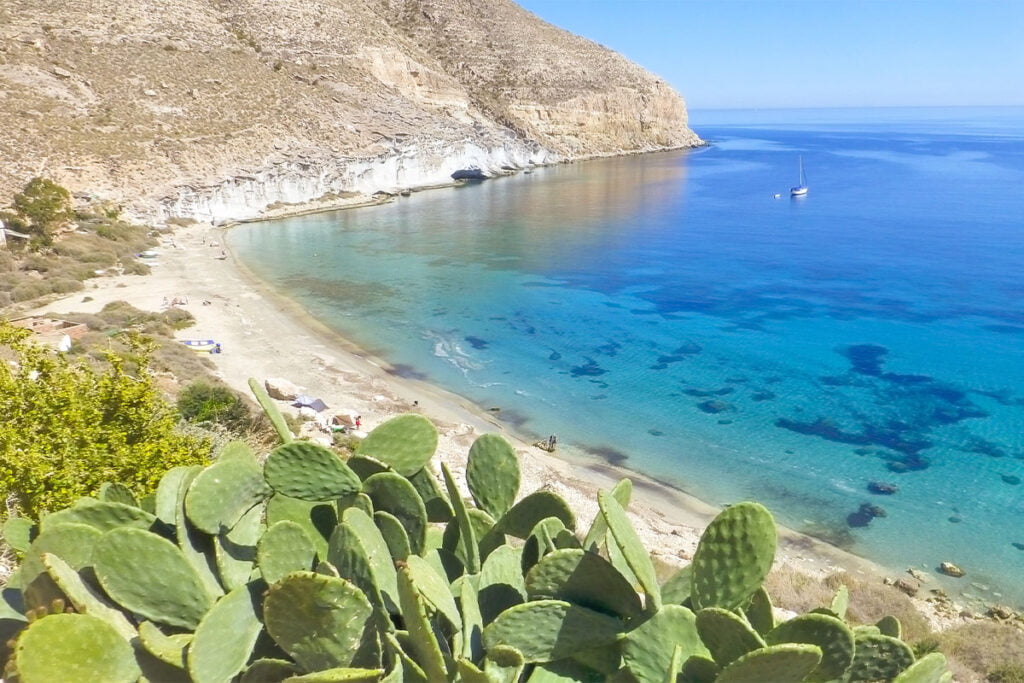
In addition to the city of Almería, you will find many other interesting locations on the local coast. The most popular among tourists are San José and Roquetas de Mar, a town perfect for water sports or sailing and offering golf courses, water parks and a whole lot of luxury hotels.

